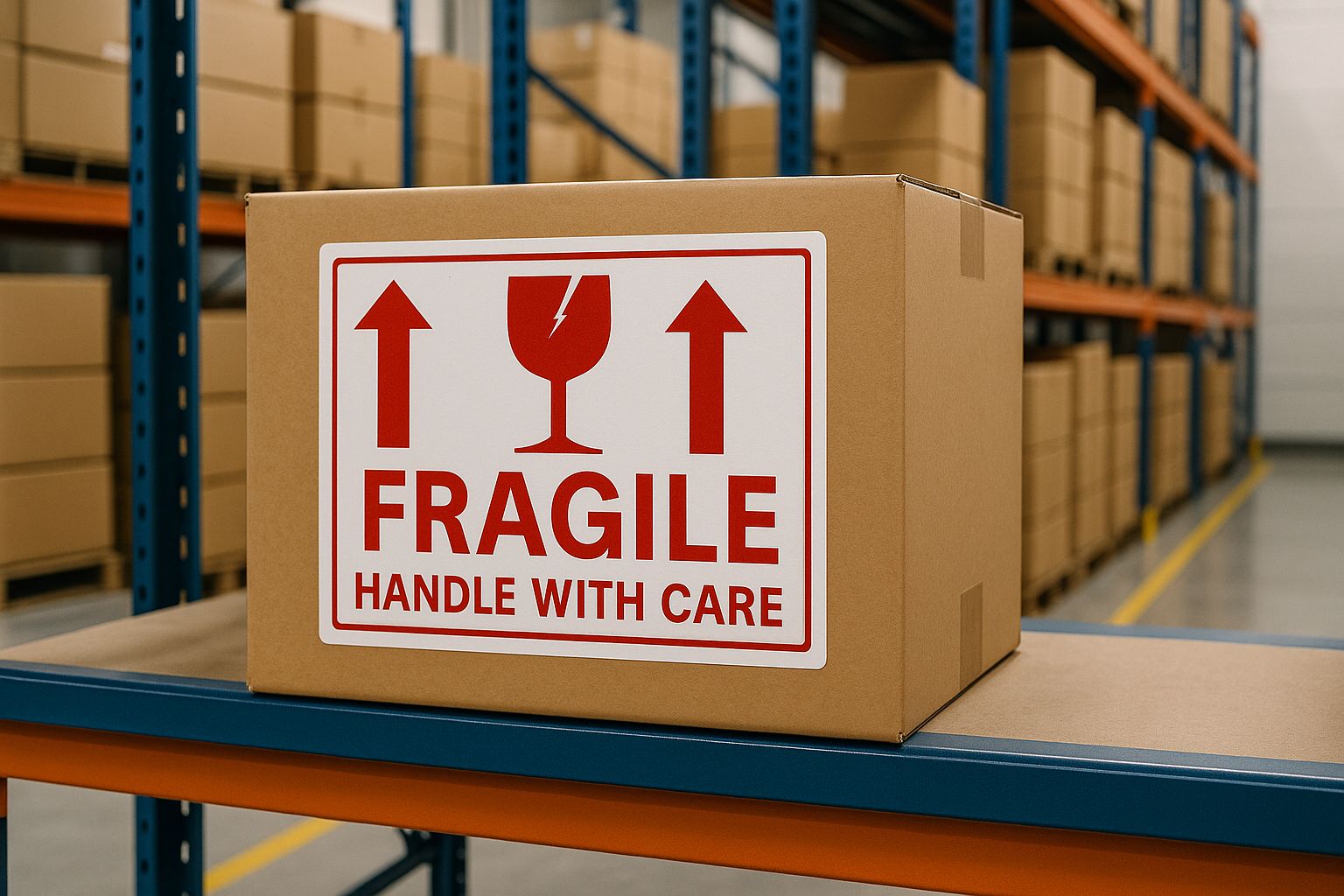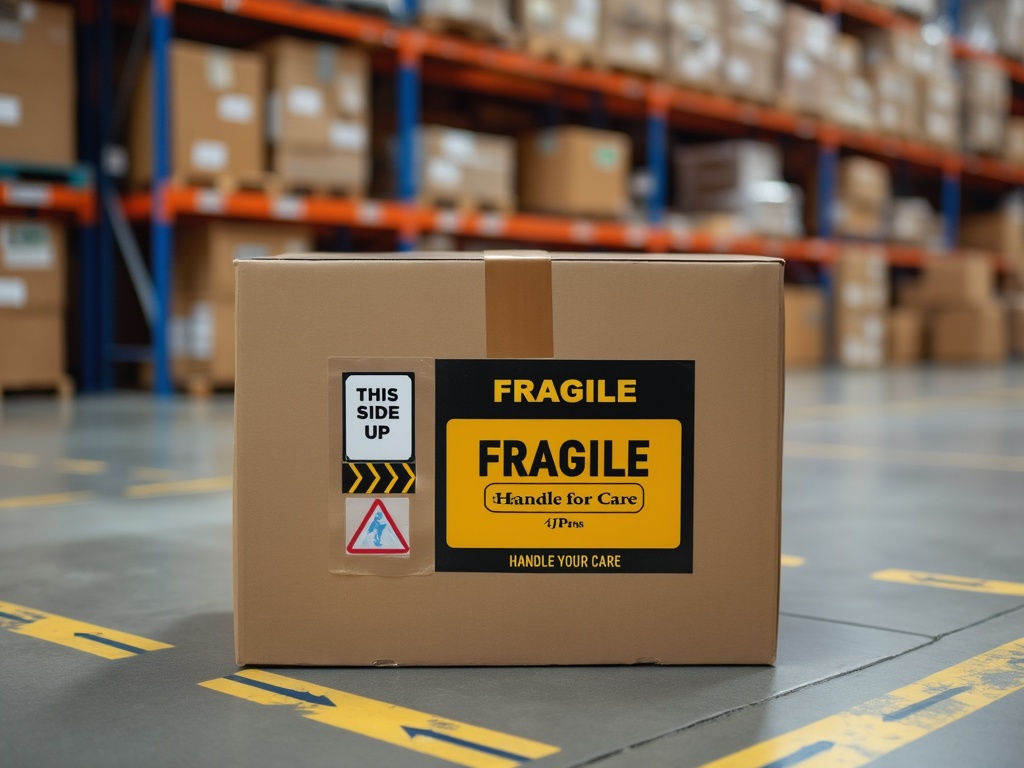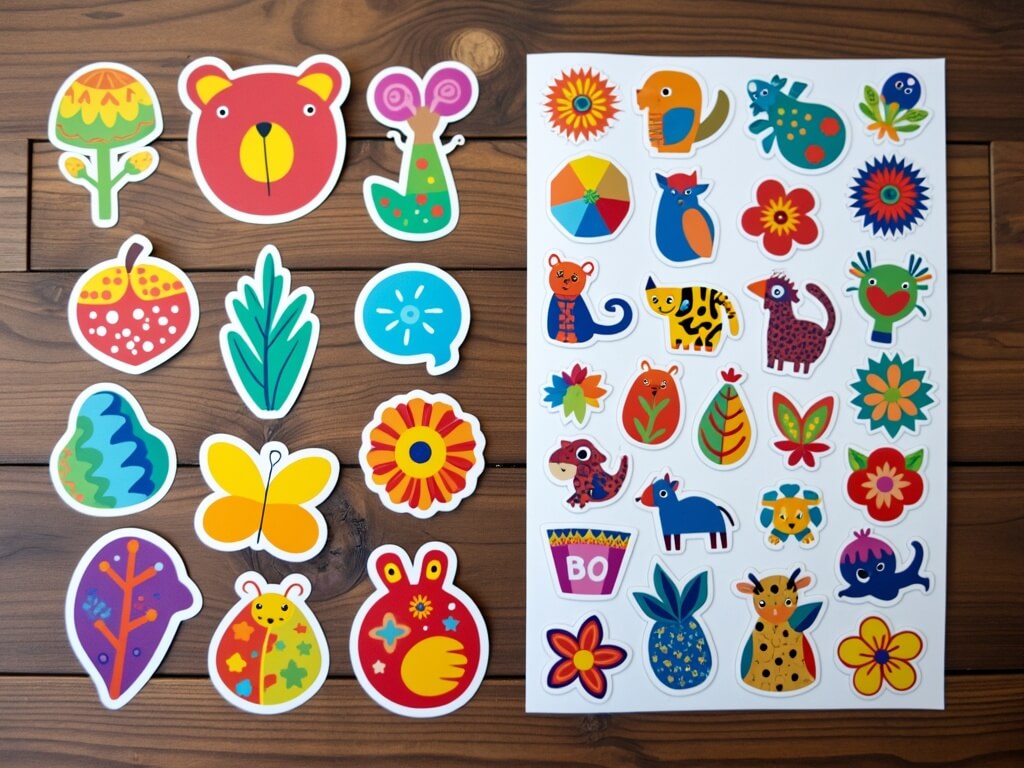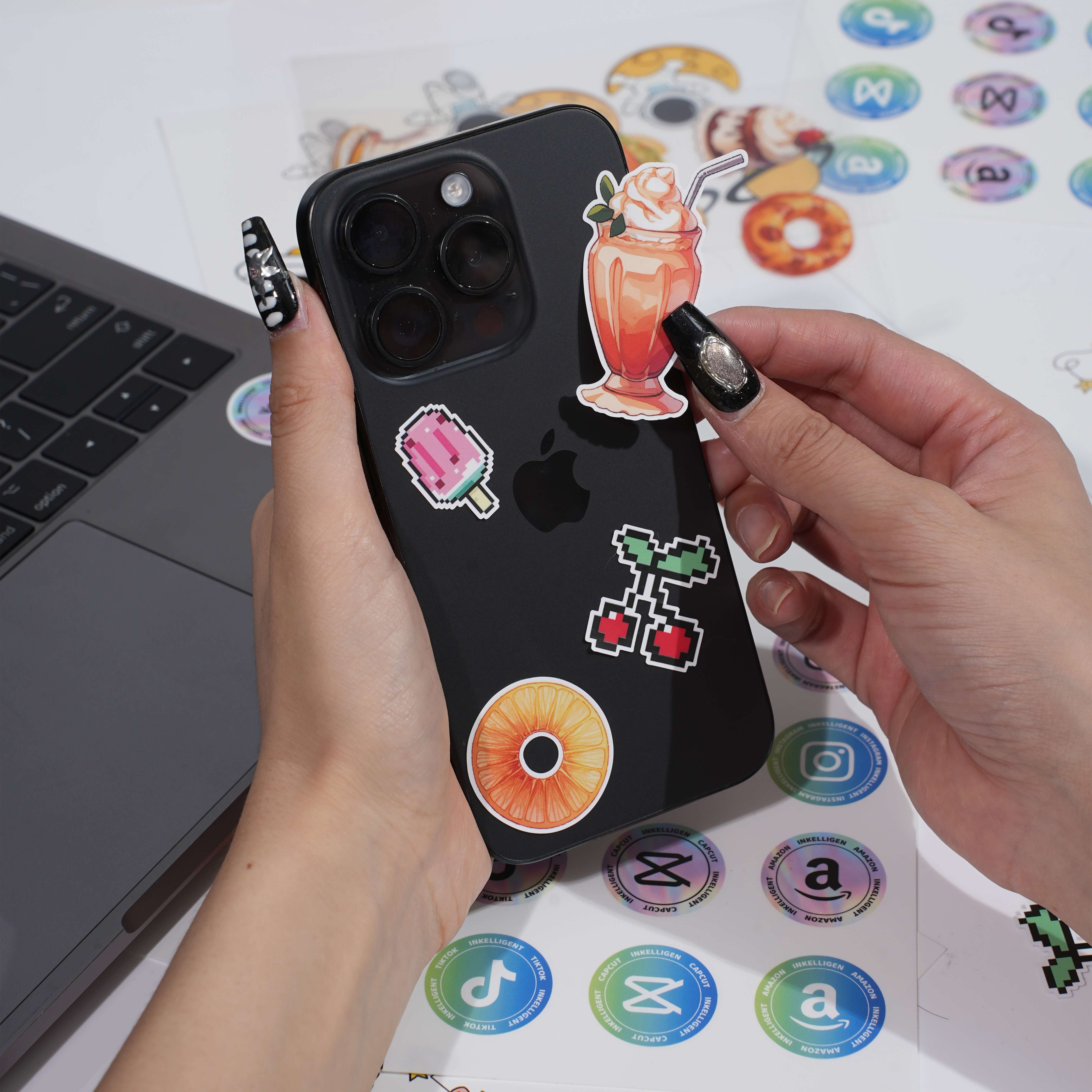
If you're running an e-commerce business, shipping fragile products probably feels like a daily gamble. Are you worried your carefully packed items might arrive damaged due to rough handling during transit? You're not alone—many online sellers face frustrating situations like customer complaints, returns, negative reviews, and costly replacements because of damaged shipments.
Fortunately, you can significantly reduce these risks with fragile stickers. These simple yet effective labels provide clear packaging protection, reminding handlers to treat your shipments carefully and ensuring your products reach customers safely. By proactively using fragile stickers, you demonstrate to your customers that you genuinely care about their experience, setting the stage for repeat business and increased trust.
Why Use Fragile Stickers?
Let's start with the basics. Fragile items are products that can easily break, dent, crack, or suffer damage if handled roughly or dropped. These include glassware and ceramics like vases, cups, and dinner plates; electronics such as smartphones, tablets, laptops, and cameras; artwork or framed photographs; cosmetic products packaged in glass bottles; and even sensitive equipment like scientific instruments. No matter what delicate items you're shipping, proper labeling is crucial for their safe delivery.
Using fragile stickers serves two primary purposes. First, they act as clear reminders for handlers to exercise caution. When package handlers and delivery personnel see prominent fragile stickers, they instinctively become more careful, reducing the chance of dropping, tossing, or stacking your packages roughly.
Second, fragile stickers serve as legal liability markers. If damage occurs during transportation despite clear labeling, these stickers can help protect your business by demonstrating that you took proactive steps to communicate proper handling instructions.
Types of Fragile Stickers
Not all fragile stickers are created equal—there are various types designed for specific needs. Understanding the differences helps you choose the right one for your products and shipping scenarios.
Standard Fragile Stickers
These classic stickers usually feature wording like "Fragile" or "Handle with Care," along with easily recognizable symbols such as broken glass icons. They're ideal for general fragile products like ceramics, glassware, decorative items, or electronics. Standard fragile stickers quickly inform handlers to treat the package gently, significantly reducing the risk of accidental damage during transit.
“This Side Up” Stickers
Some products must remain upright to avoid spills, leaks, or internal damage. Products like bottled liquids, electronics containing fluids, or even certain food items require careful orientation. "This Side Up" stickers clearly communicate the correct position for storage and transportation, helping handlers avoid mistakes that could ruin the contents. Using these stickers can prevent costly accidents and improve your overall customer satisfaction rates.
Temperature-Sensitive Labels
Temperature-sensitive labels are essential for products that must stay within a specific temperature range, such as pharmaceuticals, food items, cosmetics, or live plants. These labels alert handlers to carefully manage the package's environment, reducing the risk of spoilage or degradation. By clearly indicating temperature requirements, you ensure products reach customers in optimal condition, enhancing their shopping experience and building trust.
Moisture-Resistant Stickers
When shipping products susceptible to moisture damage—such as electronics, paper products, clothing, or leather goods—moisture-resistant stickers remind handlers to keep packages dry. Clearly marking your packages alerts everyone involved in the shipping process, significantly reducing the risk of water or humidity damage. This added protection helps maintain product quality and ensures customers receive their orders in pristine condition.
Warning Labels
Beyond general fragile labels, specialized warning stickers like "Do Not Stack," "Keep Dry," or "Flammable Items" provide additional instructions tailored to specific shipping scenarios. These labels help handlers understand precisely how packages must be treated, further reducing mishandling. Clearly communicating specific handling instructions through additional warning labels ensures your products remain safe throughout their shipping journey.
How to Effectively Use Fragile Stickers

Simply applying fragile stickers isn't enough—you must use them thoughtfully and strategically to maximize their effectiveness. Here are some practical guidelines:
Sticker Visibility
Make sure fragile stickers are highly visible by placing them on every side of your packaging. Clearly visible stickers ensure handlers can’t miss your instructions, regardless of how the package is stacked or positioned during shipping. Visibility significantly improves the chances of careful handling at every stage of transportation.
Use “This Side Up” Stickers Appropriately
If you're shipping liquids, delicate electronics, or items sensitive to orientation, always use "This Side Up" labels. Clearly marking the correct orientation minimizes the risk of leaks, spills, or internal damage. Proper orientation labeling is vital for preserving product integrity, especially with items that can easily shift or spill.
Choose High-Quality Stickers
Invest in durable, high-quality fragile stickers. Low-quality stickers may peel off, fade, or become illegible, reducing effectiveness. Premium stickers remain securely attached and readable throughout transit, providing consistent messaging from origin to destination. Don't compromise effectiveness by choosing inferior options—quality stickers are well worth the investment.
Clear Text
Ensure your stickers have large, bold, clear text that's easy to read at a glance. Avoid fancy or decorative fonts, as they can confuse or slow down handlers. Straightforward, readable designs enhance the effectiveness of fragile stickers, quickly communicating your packaging protection needs.
Package Tracking
Monitor packages marked with fragile stickers carefully. Tracking helps identify recurring issues, such as specific shipping routes prone to damage or particular handling practices that need improvement. Use this valuable data to adjust your packaging methods, sticker placement, or handling instructions, continuously improving your shipping processes.
Train Warehouse Staff
Educate your warehouse and shipping teams on proper packaging techniques and fragile sticker usage. A well-informed team ensures consistent, high-quality handling across all shipments. Regular training reinforces best practices, encourages careful handling, and reduces the likelihood of costly mistakes.
Key Considerations for Shipping Fragile Products
Beyond using stickers, implementing practical packaging strategies further protects your products:
Use Cushioning Materials
Effective cushioning materials such as bubble wrap, foam inserts, packing peanuts, or air pillows absorb shocks and prevent movement inside the package. Proper cushioning dramatically reduces impact-related damage, protecting fragile items throughout transit.
Pack Items Individually
Wrap each fragile item individually with at least three inches of cushioning material before placing them inside the box. Individual wrapping minimizes direct impact and friction between items, significantly reducing the risk of breakage. Consider eco-friendly cushioning materials for sustainable business practices.
Keep Fragile Items in One Area
Clearly group fragile items in your warehouse and during shipping. Position fragile packages lower or separately to prevent stacking accidents or crushing by heavier boxes. Making fragile products easily identifiable helps handlers quickly recognize packages that require gentle handling.
Ensure Proper Box Size
Choose packaging boxes that closely match your product size, leaving just enough room for cushioning materials. Properly sized boxes minimize movement during transit, reducing damage risks. Oversized boxes can lead to increased shifting and potential damage; undersized boxes leave no room for protective padding.
Benefits of Using Fragile Stickers
Using fragile stickers consistently provides numerous advantages for your business, making them a critical component of your overall packaging and shipping strategy. Here are five key benefits of integrating fragile stickers into your packaging procedures:
Protect Fragile Products
Clearly marked packages with fragile stickers immediately inform handlers that the items inside require gentle, careful handling. This straightforward communication significantly reduces the risk of mishandling, dropping, stacking heavy objects on fragile packages, or other common shipping-related problems. By proactively preventing damage, fragile stickers effectively enhance your overall packaging protection, ensuring your delicate products arrive safely and intact.
Improve Customer Satisfaction
When customers receive their orders in perfect condition, their overall shopping experience is significantly improved. Safe, secure delivery demonstrates your dedication to quality and care, strengthening customer trust, loyalty, and satisfaction. Satisfied customers are more inclined to make repeat purchases, leave positive reviews, and recommend your business to others. Using fragile stickers contributes directly to a positive customer experience, helping you build a strong, loyal customer base over time.
Save Costs
Regularly damaged products can quickly become expensive for your business, resulting in increased returns, replacements, refunds, and potential negative reviews. By clearly labeling fragile packages, you significantly reduce the frequency of damage, ultimately lowering costs associated with product replacement, reshipping, and handling customer complaints. Over time, this cost-saving measure contributes to better profitability and resource efficiency, allowing you to reinvest in other areas of your business.
Compliance with Standards
Proper labeling is essential not only for protecting your products but also for complying with shipping regulations and industry standards. Using appropriate warning stickers clearly communicates handling instructions, helping your business adhere to various shipping guidelines. Compliance reduces the risk of penalties, disputes, or legal issues associated with improperly labeled packages. Consistent use of fragile stickers showcases your professionalism and commitment to industry best practices.
Enhance Brand Image
Thoughtful, professional labeling demonstrates your commitment to quality, customer care, and attention to detail. Using fragile stickers prominently and consistently communicates to customers and logistics providers alike that your brand prioritizes product safety and customer satisfaction.
This attention to detail enhances your overall brand image, positioning you as a reliable, trustworthy business known for delivering high-quality products. Over time, such positive perceptions can significantly differentiate your brand from competitors.
Final Thoughts
Fragile stickers might seem like small details, but they significantly impact your business success. Strategic use of fragile stickers, alongside thoughtful packaging protection techniques and clear warning stickers, helps protect your products, reduce damage, and deliver an outstanding customer experience.
By clearly marking packages and training your team, you can confidently ship fragile items, knowing that your customers will receive their orders securely and intact—every single time.




